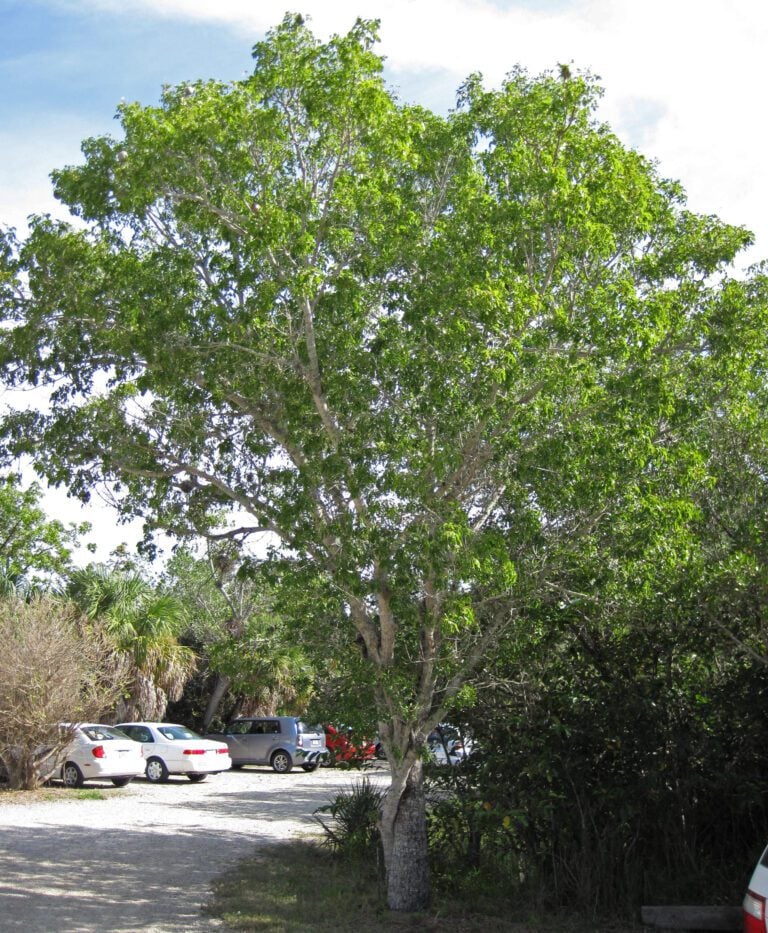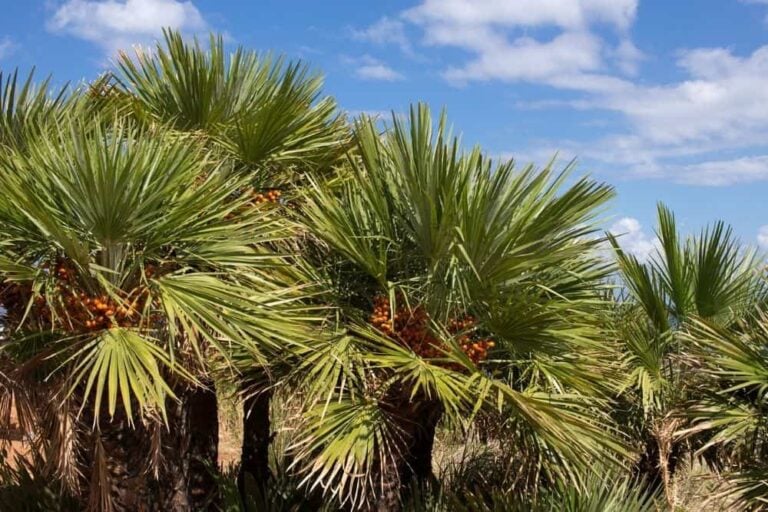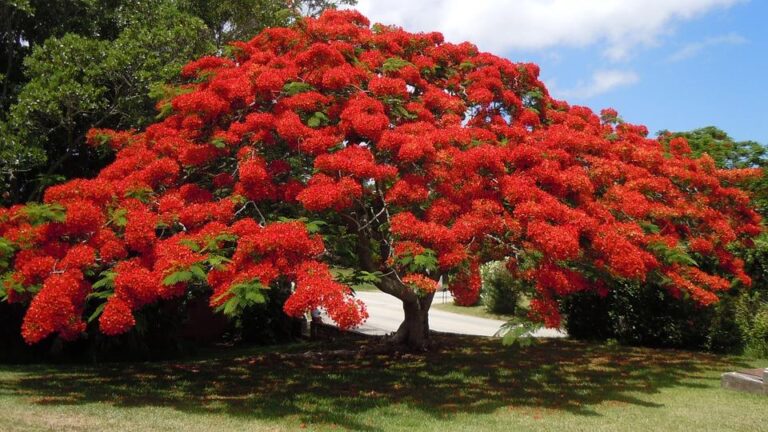Finding the Best Flowering Trees for Your Garden
Our recommendations for the best flowering trees are the Eastern Redbud Tree and the Royal Star Magnolia Tree. Both bloom in the spring with a dazzling display of color and curb appeal. Other than their beauty, we also narrowed our choices to tolerant trees. They can fare well in a variety of conditions. Read on to learn more about choosing the right flowering tree for your yard.
Our Top Picks for the Best Flowering Trees
[wptb id="8109" not found ]Things to Consider When Choosing a Flowering Tree
The features of a flowering tree that stand out the most for you are likely personal preferences and garden ideas. That said, you probably already have in mind a flower color you’d like. Don’t worry if the tree you want doesn’t have flowers in the color you desire. Many trees have cultivars that often have different varieties of blooms. It’s just a matter of finding the right one at your local nursery.
Flowering Season
There are a couple of aspects of the flowering season that you should consider. First, think about when you want your tree in bloom. Consider the weather that is typical for your area. A late-season snowstorm could wipe out spring flowers. If that is a frequent occurrence, you may want to rethink planting a tree that blooms in early in the season.
You should also consider the length of the blooming season. Some trees have flowers for a short time. If you want to enjoy them longer, opt for a tree that holds onto its flowers longer or has a blooming season later in the year. You might also consider other features about the tree like its bark color that make attractive even when it’s not in flower.
Scent
Scent is another important consideration. Again, this choice goes back to your tastes. But there are other things that you may factor into the equation. Remember, sweet fragrant smells may seem pleasant to you. But you also want to consider what other creatures may share your opinion.
A flowering tree that attracts bees may pose a problem if anyone is allergic in your home. Of course, it isn’t just the bees. Think about other potential pests like deer, rodents, and other critters. Some trees may attract the pollinators like birds which you may find welcome.
Yard Waste
As beautiful as trees flowering are, it can create a mess once the season is over. That’s why it pays to research the trees you’re considering. You’ll want to know what to expect during and after flowering. The purpose of flowers, after all, are to produce fruit. Find out if those pretty flowers are going to lead to a messy cleanup of spoiled fruits.
What You Need to Know about Trees
Choosing a flowering tree based on its looks is only the tip of the iceberg. You’ll also need to consider the other factors involved that apply to any tree purchase. The height and spread or width of the foliage of a tree are among the primary things you need to know. It’s essential to learn the mature size of the tree as well as its shape.
Your yards landscaping space can provide an excellent starting point. Begin by selecting a site at least 25 feet away from your house. Then, measure the size that would fit your location. Consider both the perimeter around the tree and the height above it. Take into account overhead power lines as well as other structures or features in your landscaping.
This video by the University of Wyoming Extension explains in more detail the importance of choosing the right tree for your space.
Tree Shape
You’ll find trees in a variety of forms. Some have a pyramid shape that tapers toward the top. Others are more like columns. There are trees with a broad crown like an oak. You’ll also see semi-round, layered forms like flowering dogwood. Looking at pictures of mature trees can help guide your choice beyond the color of the blooms.
Hardiness
Another consideration is hardiness. You certainly want to enjoy your flowering tree for a long time. The best way to ensure your tree will last for the long haul is to match its needs with the conditions that your site provides. You have some wiggle room. For example, you can amend soils to correct pH issues. You can fertilize to boost your soil’s nutrient values.
As a general guide, you can use the USDA Hardiness Zone Map. Your location’s zone tells you the lowest temperature threshold for your tree. A tree rated for Zone 7 won’t survive if your winter temperatures dip much below zero. Other things to consider include heat, drought, and soil type. You might want to consider a tree that tolerates wide zones.
Maintenance
Maintenance is one area where you need to be brutally honest. Think about how much time and energy you want to devote to tree care. It doesn’t make sense to plant a tree that is not drought tolerant in a dry region. If you don’t spend the time watering it, it won’t thrive. Besides, garden trees are less likely to flower if stressed. To a tree, fruits and flowers are resource-expensive.
Maintenance will also include pruning. During its early development, you may need to prune your tree to train it to grow in the proper manner. Left on its own, a tree will keep growing in all directions as long as it has the resources it needs. Pruning can enhance the attractiveness of your flowering tree, so it worth learning how to do it right.
Growth Pattern
You should also research a tree’s growth pattern. A fast-growing tree blooms quickly. However, it might not live as long as a slower-growing tree. On the other hand, you’ll enjoy your flowering tree longer with one that grows slower. Buying a tree, after all, is an investment. You need to weigh all these factors when choosing the right tree for you.
Our Recommendations: Eastern Redbud Tree and Royal Star Magnolia Tree
When picking a flowering tree, you need to consider several things. Many go well beyond the aesthetics. You need to think about how the tree matches your site, front yard or back yard, and its environmental conditions. We put a high premium on low maintenance and hardiness. For flowering trees, we preferred something smaller under 25 foot. We thought it makes it easier to enjoy firsthand.
With its beautiful rose-colored blooms, the Eastern Redbud Tree offers a stunning way to ring in spring. It grows up to 30 feet with a 35-foot spread. We liked its wide range of tolerances for soil types and sun exposure. That much was evident with a tree that is suitable for Zones 4 to 9.
The Royal Star Magnolia Tree is a slightly smaller tree than the Eastern redbud. It reaches a height of 20 feet with a 15-foot spread. Its gorgeous white flowers bloom in the early spring. Like the redbud, it also adapts well to a variety of soil types and sun exposures. You can plant the
Our picks both bloom in the spring or have spring flowering. We liked the dramatic display that flowering early in the season offers. Both trees tolerate a broad spectrum of environmental conditions. With a medium growth rate, you’ll enjoy either one for years to come.
Photo by shell_ghostcage licensed under CC0.




I’ve owned a Bad Boy Maverick (60-inch deck) for two years. It’s a beast … built like a tank! The suspension system on this zero turn is worth every penny! No longer do I have to take medication for aches and pains after mowing sessions! No doubt, this is a commercial mower. With scheduled maintenance and reasonable care, this mower should last a very, very long time! I’ve never regretted my purchase. You get what you pay for.